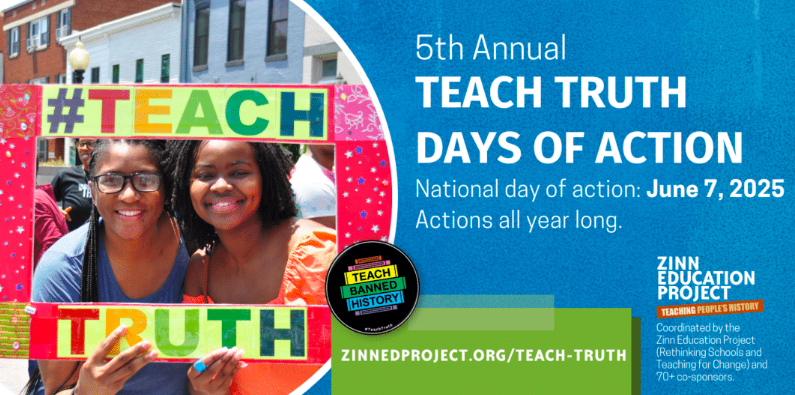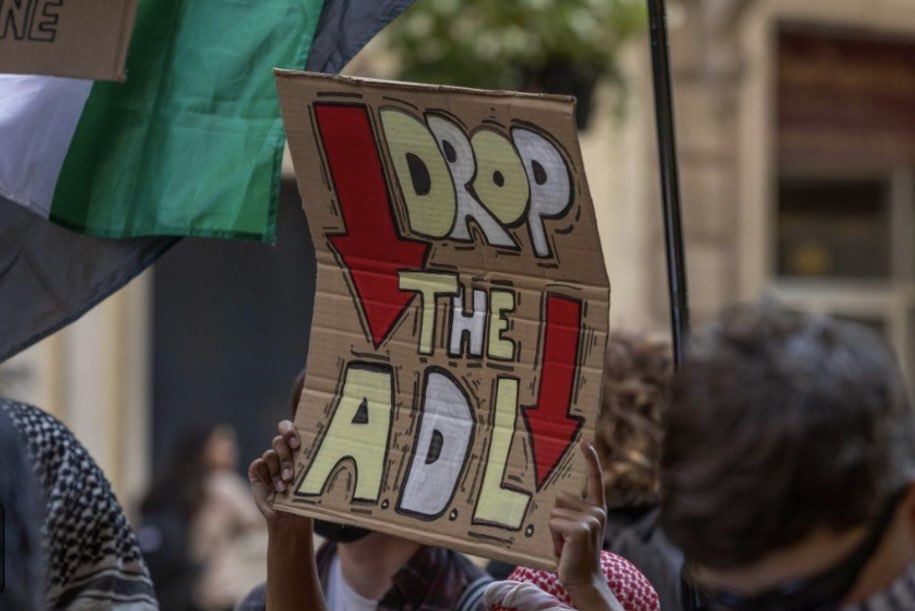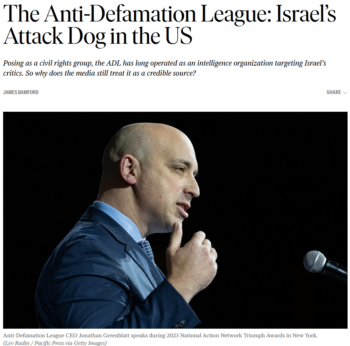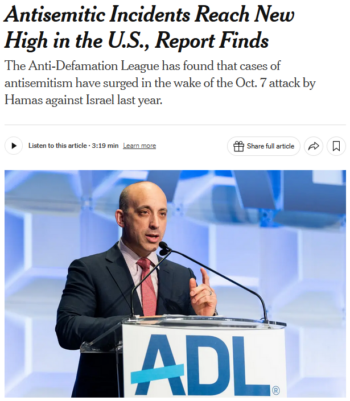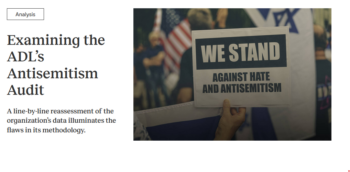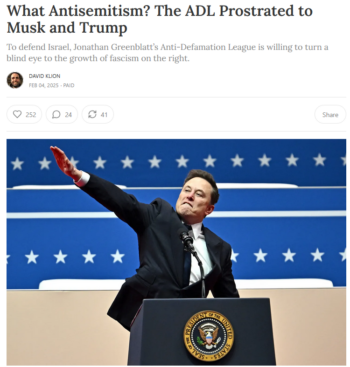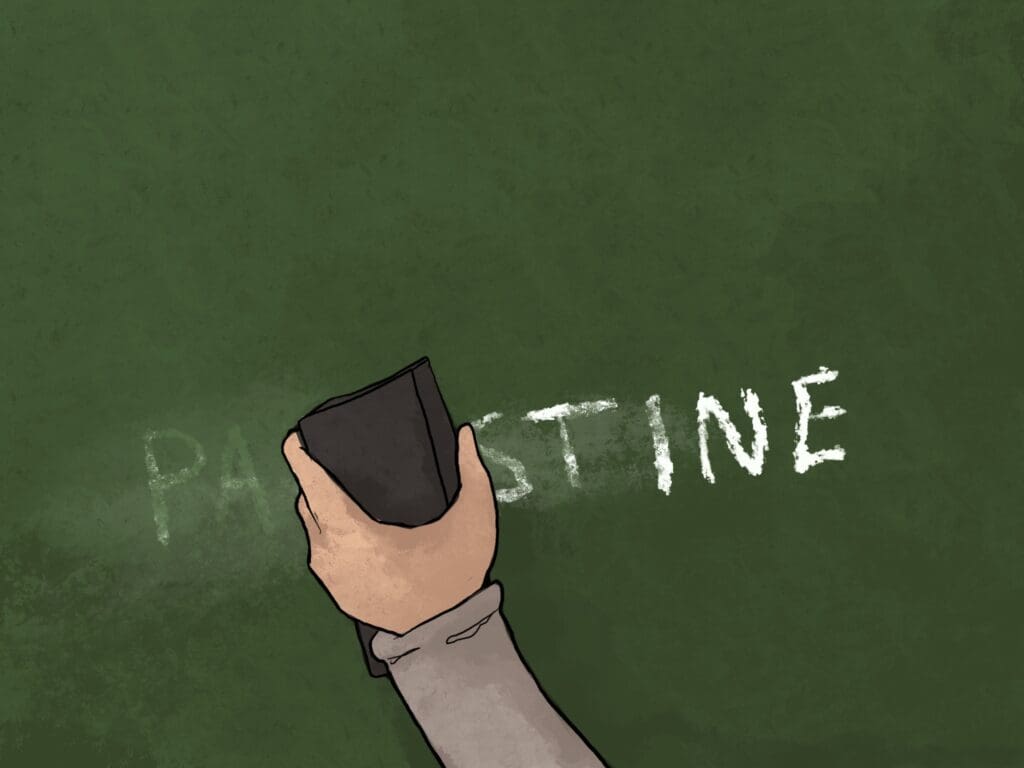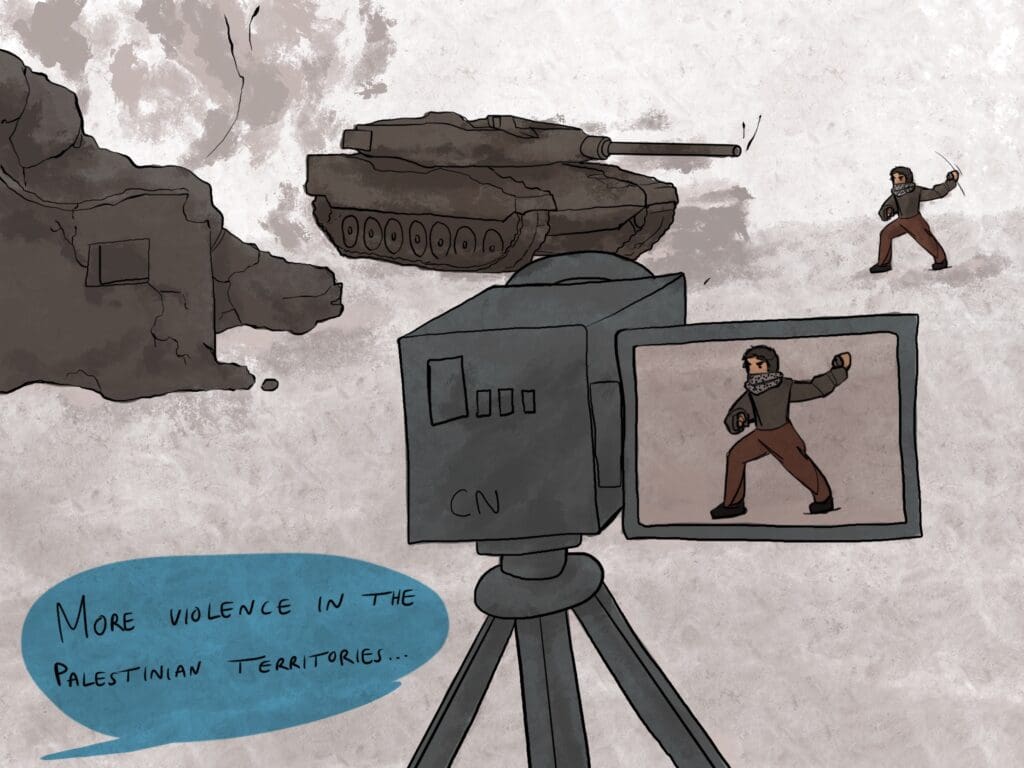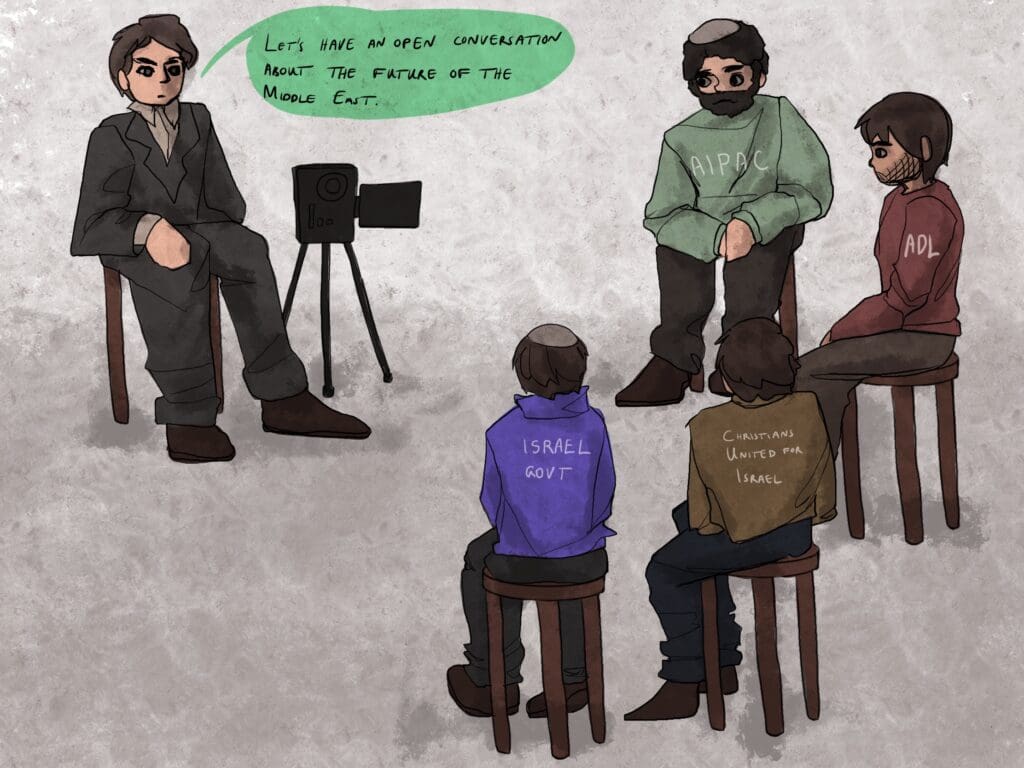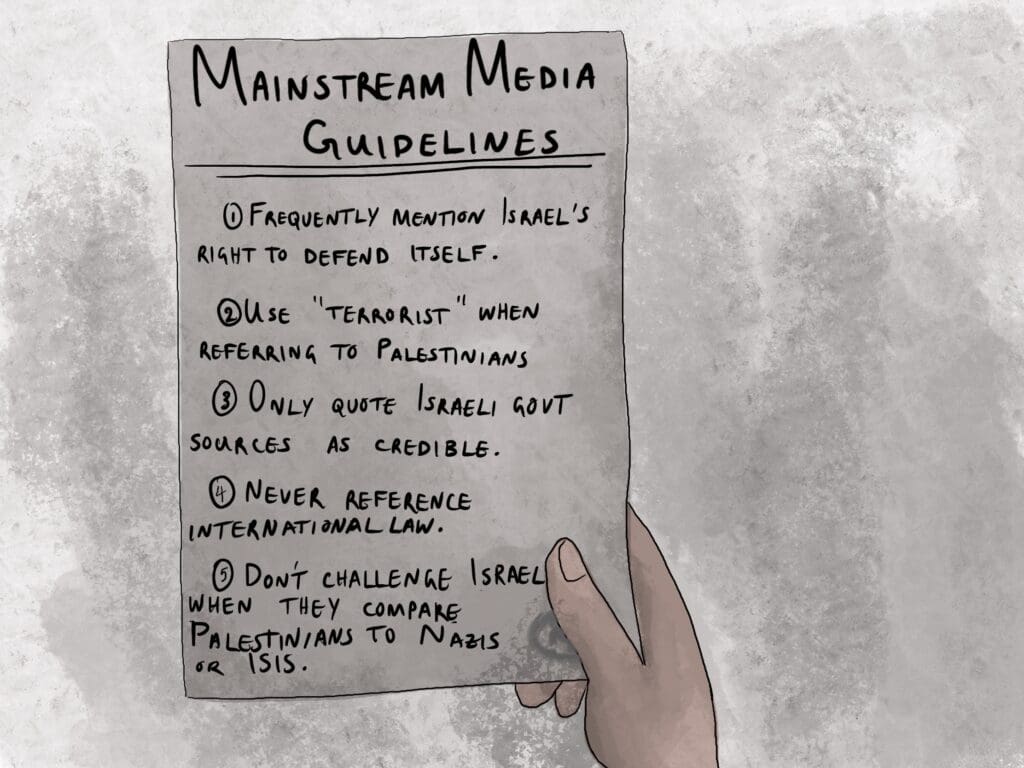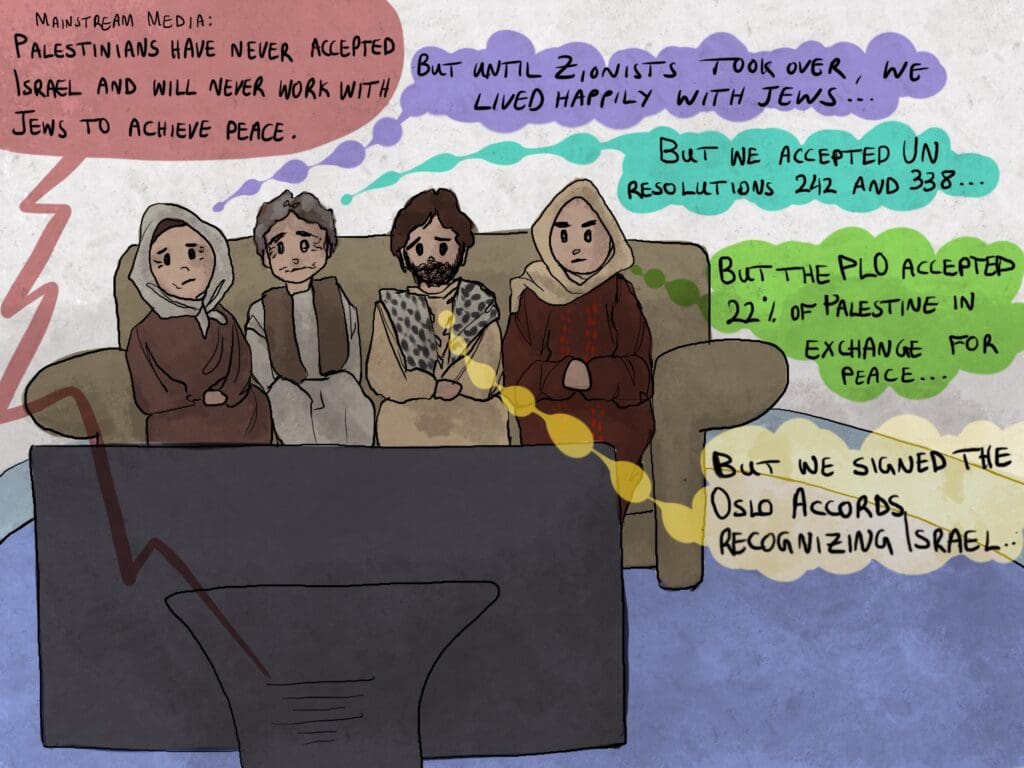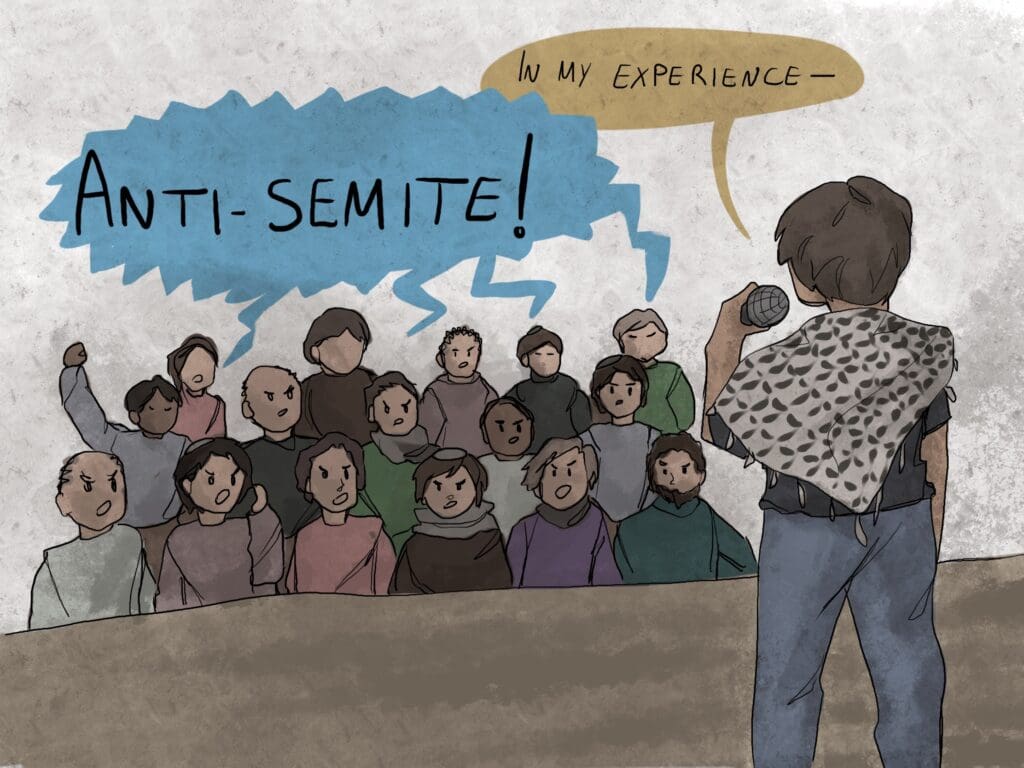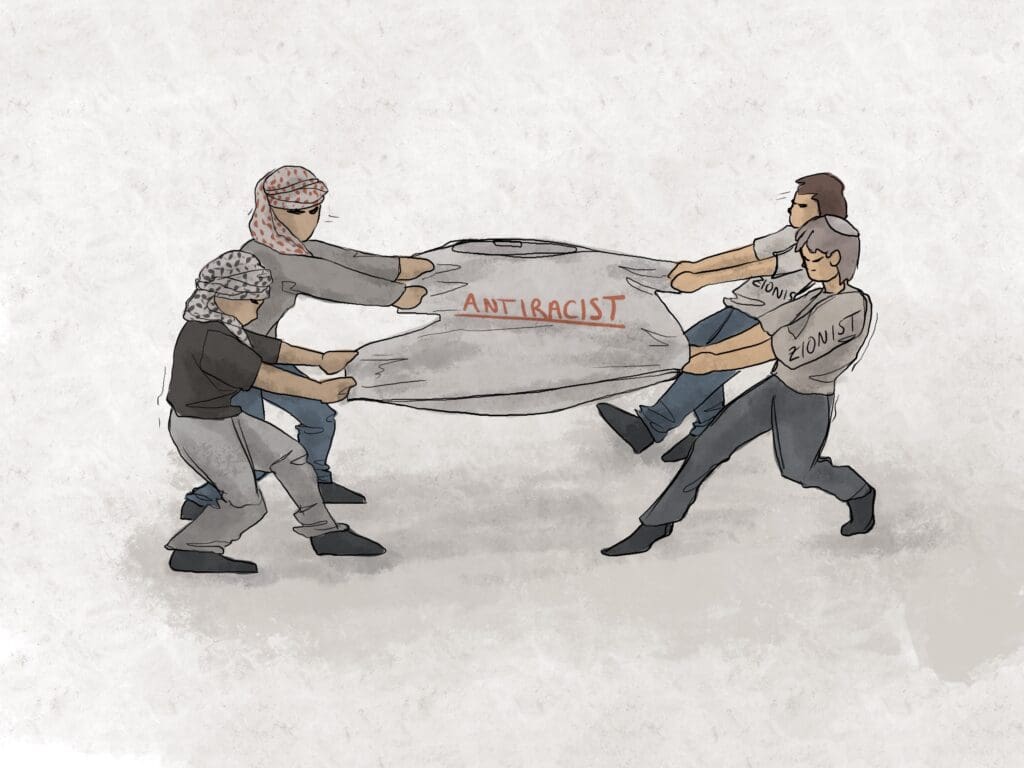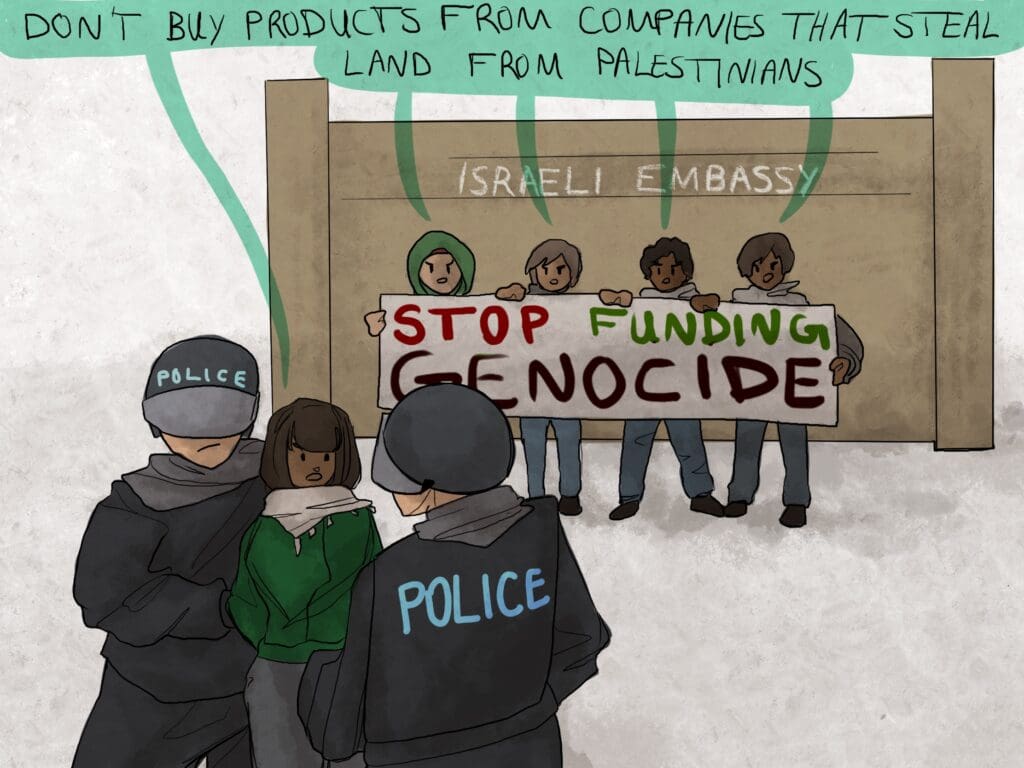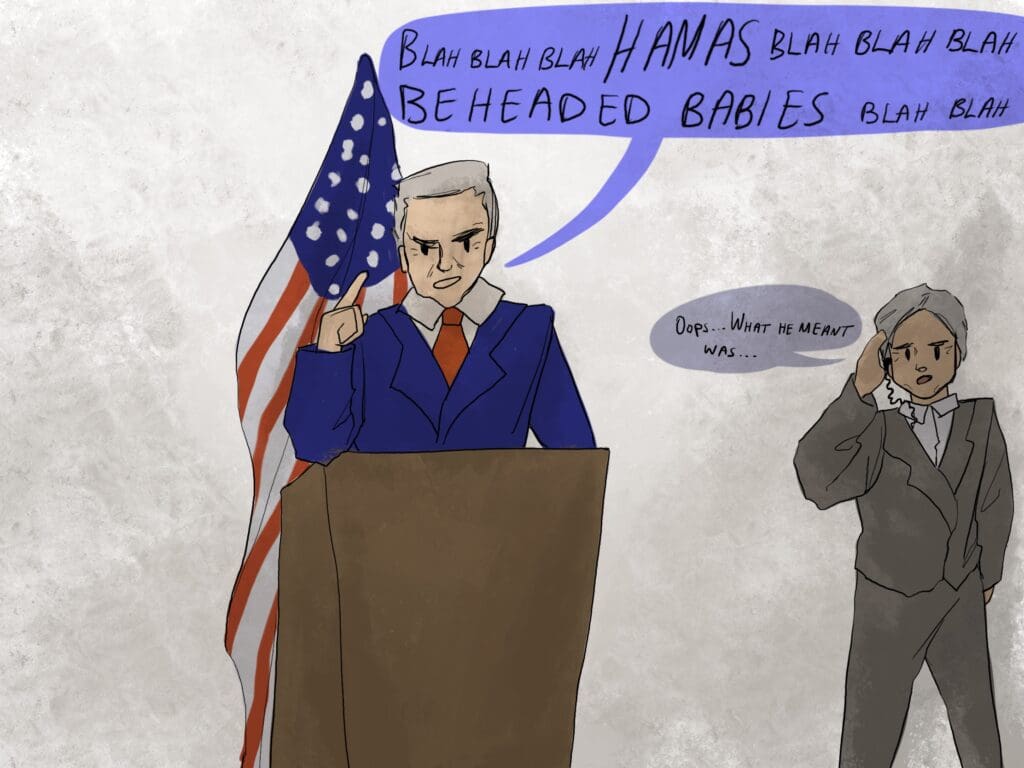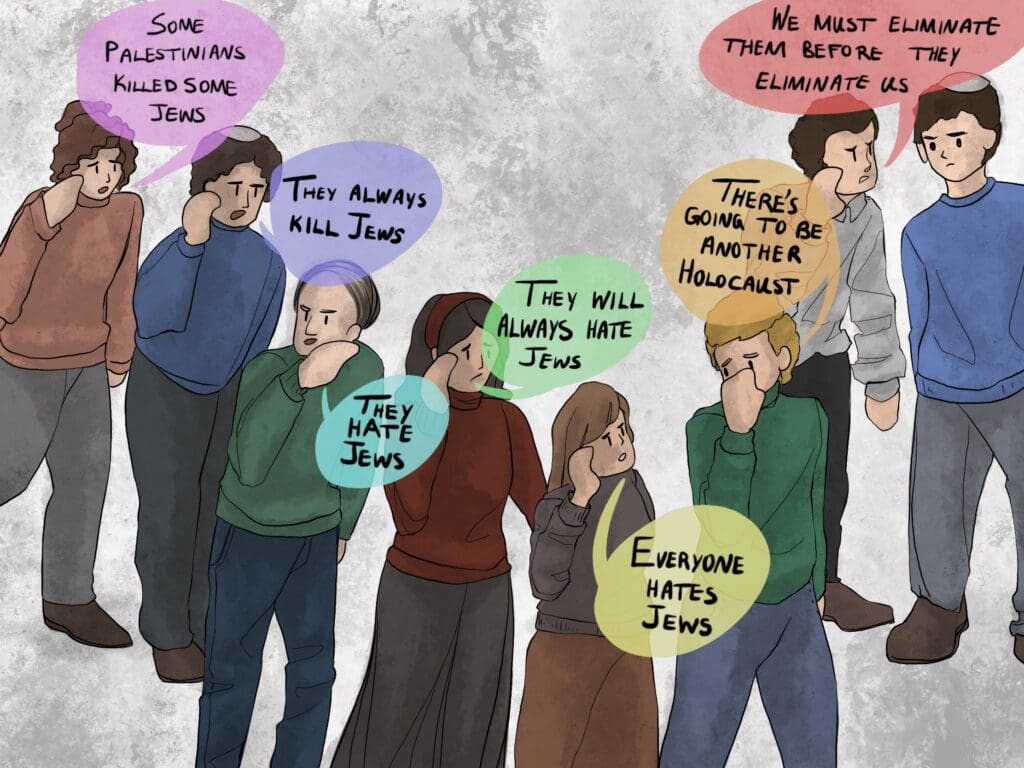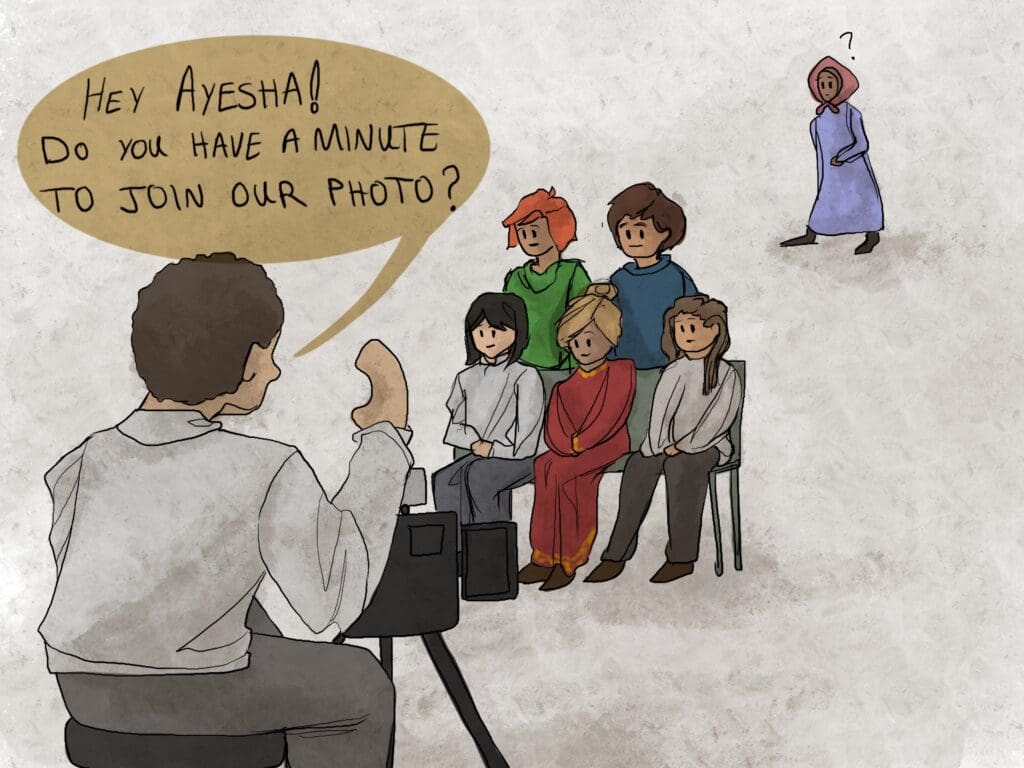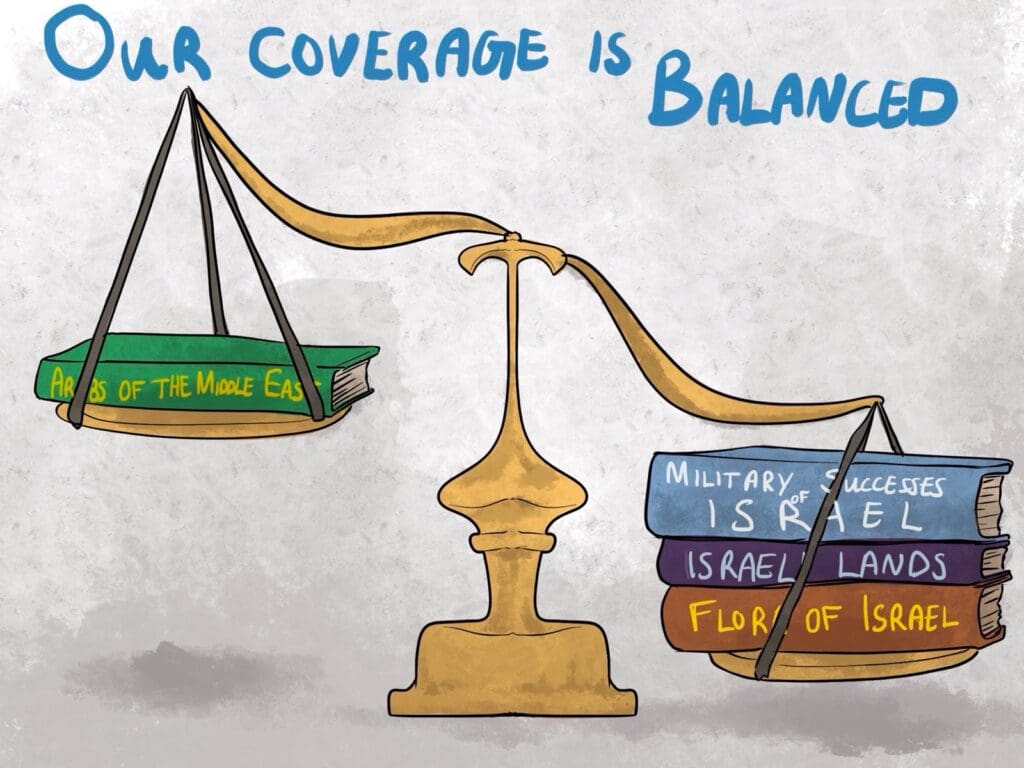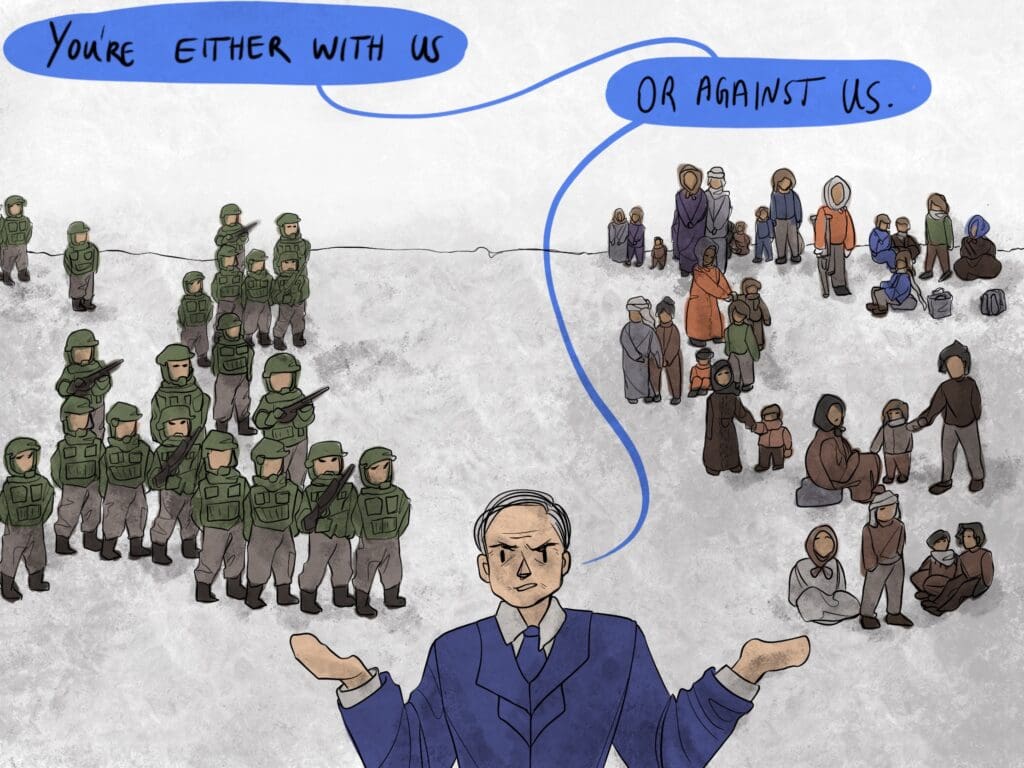This article was originally published in Truthout.
On July 5, the highest deliberative body of the country’s largest union, the National Education Association (NEA), voted at their 2025 Representative Assembly to call on the NEA to “not use, endorse, or publicize any materials from the Anti-Defamation League (ADL), such as its curricular materials or its statistics. NEA will not participate in ADL programs or publicize ADL professional development offerings.” Less than two weeks later, the NEA board overturned this democratic decision from the delegates — yet another capitulation to an organization that many educators and others have called a bully.
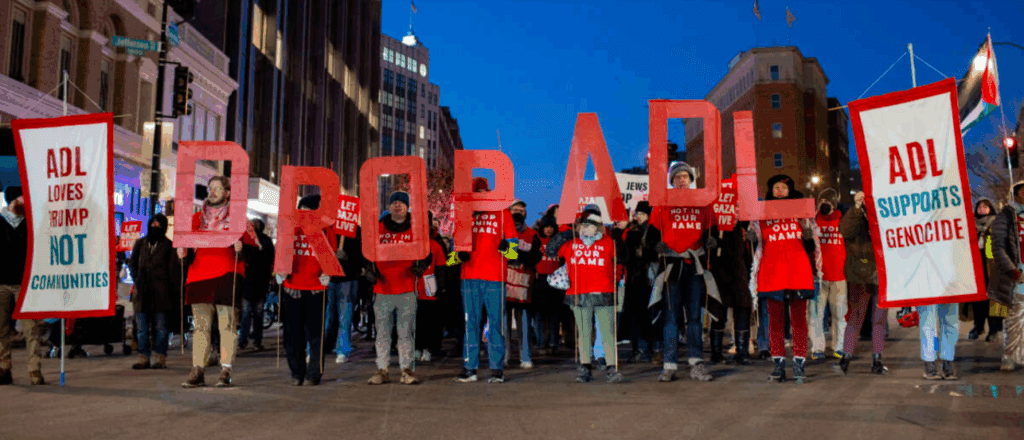
The ADL, which has long represented itself as a civil right organization, was exposed as a right-wing, Israel-aligned political advocacy organization by #DropTheADL. More recent campaigns like Drop the ADL from Schools have argued it should not be considered a social justice partner to schools. The campaign to drop the ADL from schools contends that the group:
- is an anti-Palestinian, Islamophobic, and racist political advocacy organization that censors learning and undermines inquiry;
- produces faulty statistics about antisemitism to create alarm;
- misconstrues anti-Zionism and antiwar protest as antisemitic, undermining our constitutional rights to speech and assembly;
- falsely accuses educators and educational institutions of hatred of Jews using reputational slander and lawfare;
- distracts attention from actual antisemitism coming from the U.S. government, right-wing activists, and white Christian nationalists.
NEA member educators celebrated the July 5 vote as a coup against the stranglehold of the ADL on education. The win — a result of multi-year organizing by the Educators for Palestine and Arab American caucuses of the NEA — was visible proof that public opinion in the United States has shifted, with a large majority of voters expressing disapproval of Israel’s assault on Gaza.
Immediately after the vote, NEA leadership invoked its standing rules, claiming that the measure, known as New Business Item (NBI) #39, constituted a boycott or sanction and therefore had to be referred to the executive committee.
After those rules were invoked, hundreds of NEA member educators coalesced on Signal in an ad hoc support group to demand that NEA leadership respect the democratic will of the representative assembly. NEA members and allies sent more than 20,0000 letters to the executive committee in support of dropping the ADL, including nearly 1,200 letters from Jewish NEA members specifically.
But the ADL and its allies lobbied harder. On July 14, the ADL released what it called a “communal letter” to NEA President Becky Pringle, signed by hundreds of Jewish congregations, nonprofits, and advocacy groups framing the union’s vote as antisemitic. It also reaffirmed its disdain for pro-Palestinian actions by teachers’ unions in California and Massachusetts, citing them as evidence of “open hostility toward Jewish educators, students and families coming from national and local teachers’ unions and their members.” According to recent reporting from New York magazine, the ADL’s CEO Jonathan Greenblatt blamed the measure on a “pro-Hamas” faction in the union.
“The ADL’s lack of trust in teachers is evident in the way it leveraged power to quash NBI #39,” Danielle Bryant, a former ADL education director whose recent exposé argued that the ADL prioritizes politics over education, told Truthout. “It is a stark reminder that the ADL claims a monopoly on arbitrating what is and isn’t antisemitism, and anyone who doesn’t share their definition is labeled an antisemite,” Bryant told Truthout of the ADL’s reaction to the vote.
Pro-Israel media also played a part by misrepresenting the intent, content, and significance of NBI #39. The news outlet Diverse: Issues in Higher Education, for example, said that if upheld, the measure would prohibit the union from using ADL materials about antisemitism and the Holocaust, as if the purpose was to deny students access to resources about Jewish history. The Washington Times quoted the president of the conservative watchdog group Accuracy in Media saying it was “alarming — but not surprising — that the NEA decided to terminate its relationship with the ADL when antisemitism is at an all-time high,” cynically invoking skewed statistics from the ADL itself.
Emboldened Republicans introduced legislation to revoke the NEA’s federal charter, citing both the vote to repudiate the ADL, as well as a separate vote calling on the NEA to “defend democracy against Trump’s embrace of fascism.” The Republican attack — not the first attempt to discredit what the GOP considers the left-wing politics of the NEA — echoed the ADL’s lobbying language.
Less than two weeks after the vote, on July 18, the NEA executive committee met with almost no public notice. That was followed immediately by a meeting of the NEA board of directors, which decided to overturn the democratic vote taken in the Representative Assembly. In a statement, NEA President Pringle claimed to have determined “after consideration” that “this proposal (sic) would not further NEA’s commitment to academic freedom, our membership, or our goals.” To reach this decision, the NEA said it consulted with “NEA state affiliates and civil rights leaders, including Jewish American and Arab American community leaders, and we also met with ADL leadership.” The decision to overturn the vote did not, however, allow for rebuttal by state NEA affiliates — the procedure called for the same rules that NEA leadership used to claim jurisdiction over the final decision.
“NEA opposes efforts to shut down debate, to silence voices of disagreement, and intimidation. We recognize the underlying concerns of the authors and supporters of the proposal, and we are committed to ongoing discussion with our community,” the statement read. “Not adopting this proposal is in no way an endorsement of the ADL’s full body of work. We are calling on the ADL to support the free speech and association rights of all students and educators.”
Even though the NEA capitulated, the GOP continued its campaign against the union. House Republicans introduced the anti-union STUDENT Act (Stopping Teachers Unions from Damaging Education Needs Today Act), which threatens to modify the NEA’s charter and weaken the union. In a statement announcing the proposed legislation, GOP lawmakers quoted Aaron Withe, the CEO of the right-wing, anti-union Freedom Foundation.
While many supporters of the campaign to drop the ADL felt blindsided by the NEA’s betrayal, some experienced union members were not surprised. They say this isn’t the first time the NEA disregarded the votes of members when they don’t align with the interests of union executives. For example, when members voted to endorse progressive Bernie Sanders, NEA leadership decided instead to align with Hilary Clinton — perhaps, some argue, because NEA leadership positions are seen as a fast-track to the Democratic Party. “Last year, the NEA locked out its own staff from their own union,” said Alison, an organizer supporting Educators for Palestine who did not want her last name used for fear of repercussions. “How are we supposed to trust them to represent teachers’ interests?”
A longtime labor organizer who also didn’t wish to be named to avoid negative impact on their career said, “The majority of U.S. unions have headquarters in Washington, D.C. in order to capitalize on political relationships, which can take priority over organizing and communicating with members.”
When it comes to supporting Palestinian rights, backlash from the ADL and its allies has fallen squarely on activists, students, and educators, with individual teachers, schools, districts, and educational associations being targeted with what activists call bad faith accusations of antisemitism. These include reputational slander or lawfare attacks like Title VI civil rights complaints that mix instances of real antisemitism with support for Palestinian rights that is misrepresented as antisemitic. For workers, the cost of being targeted have included disciplinary measures, loss of livelihood, loss of professional credibility, severed relationships and mental health problems. “Since the ADL has so much influence over teachers at the national level, it’s not surprising that educators have lost jobs or contracts for teaching in a balanced way that falls short of what the Israel lobby wants,” said Angela, an NEA member and Representative Assembly delegate who teaches in Maryland, who asked for her name to be withheld to prevent further professional repercussions. The NEA, like other unions, has often been uneasy about supporting members like Angela, who was disciplined by her district for publicly opposing the genocide in Gaza. She said, “My local protected my due process, but there was no political support. I think they saw paying for arbitration for me as a waste of their political capital.”
Educators were therefore not surprised that the ADL’s bullying tactics were so effective. The NEA is only the most recent addition to the list of educational organizations that ADL has strongarmed into supporting its aims over those of their own members.
In 2024, at least two educational associations caved to political pressure from the ADL, calling into question the strength of the country’s K-12 educational infrastructure. An accusation of antisemitism by the ADL against a pro-Palestinian speaker at the National Association of Independent Schools’ People of Color Conference led to an immediate apology from the association, despite support for the speech from attendees. Soon after, the association announced that its flagship equity programs — which include that conference — were “paused,” which many educators fear is a euphemism for cancellation. Soon after, the ADL accused a speaker on an equity panel at the annual conference of MassCUE (the Massachusetts state affiliate of the International Society for Technology in Education) of antisemitism. This led to the Massachusetts Association of School Superintendents severing ties with MassCUE, a longtime partner. Subsequently, the MassCUE executive director was dismissed and the board of directors resigned, the organization went dark, and then seemed to relaunch with new leadership and without any explanation to member educators.
The Trump administration has engaged in similar bullying tactics targeting education, threatening to cancel university funding as punishment for supposedly rampant antisemitism, which inexplicably can be washed away by the payment of large fines by Columbia, Harvard, and the University of California, among others. The ADL’s response to the Trump administration’s bullying varies, with Greenblatt calling Trump’s crackdown on Harvard “overreach” back in March, but then praising Columbia’s role in the detention of Palestinian activist Mahmoud Khalil in the same month. Organizers note that the Trump administration’s use of accusations of antisemitism to extract political concessions mirrors the yearslong weaponization of Title VI civil rights law by the ADL and other pro-Israel advocates, including against both universities and K-12 schools.
“People are generally so afraid to get antisemitism wrong or of being called antisemitic, they act out of fear, even when it means undermining educators’ longstanding commitment to creating safe and inclusive learning environments,” said Bryant.
The NEA’s capitulation is another feather in the ADL’s cap and a win for the Trumpist interests that organize to weaken labor unions’ advocacy for their members’ democratic rights. The ADL’s willingness to undermine democracy to get what it wants reveals its true nature as a pro-Israel political advocacy organization, not a civil rights advocate. “The NEA has been attacked directly by right-wingers. You would think they would realize that aligning with them will not protect them the way backing their members would,” said Alison.
Although NBI #39 was overturned, the member educators who oppose the ADL’s anti-Palestinian interference in schools do not plan to give up. “The NEA’s turn away from its members and toward the ADL transforms it from being an ally to call in to an advocacy target that must be called out,” said Alison, who noted the danger to the labor movement as a whole when workers’ voices are ignored. Rethinking Schools magazine also released a statement with the same sentiment:
“[I]t’s not too late. The voices calling for justice — Palestinian, Jewish, Black, Indigenous, queer, Muslim, and working-class educators — aren’t going away. They are the future of this union. They are organizing in defense of academic freedom, in solidarity with Gaza, and in pursuit of a world where no child learns under occupation and scholasticide no educator is threatened for teaching about those crimes.”
Members of the NEA, who are both educators and workers, voted to oust the ADL because they are committed to teaching the truth and developing skills in critical thinking that young people need to act as socially responsible global citizens, and because they understand that the ADL’s anti-democratic efforts to undermine education also harm them as workers. This makes the NEA’s repudiation of the ADL an important inspiration for all workers, not only NEA members — because all workers are threatened by organizations like the ADL that ally with right-wing forces to undermine workers’ rights and the integrity of the labor unions mandated to protect them.
